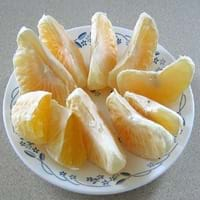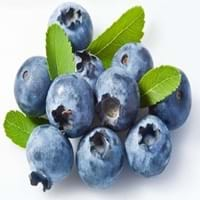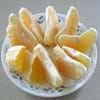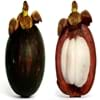Health Benefits
Increases metabolic rate, Lower blood pressure, Protects against kidney stone formation
Cancer prevention, Cures gastro-intestinal troubles, Improves night vision, Improves stomach health, Prevents diabetes, Prevents high blood pressure, Reduces blood circulation problems
General Benefits
Gives you energy
Fights against infections, Helps in weight loss, Prevents blood clotting in vessels, Treatment of urinary tract infections
Skin Benefits
Skin cleansing
Anti-aging benefits, Nourishes skin, Protects against skin damage
Hair Benefits
NA
Prevents hair loss
Allergy Symptoms
NA
Not Available
Side Effects
Affects blood glucose levels, Decrease in blood sugar levels, Coagulation
Decrease in blood sugar levels, Diarrhoea, Dizziness, Headache, Internal bleeding, Stomach pain
Best Time to Eat
As a snack in the late afternoon, Eat the fresh ones, avoid mixing with any other foods, don't eat after meal., Morning time (before lunch)
As a snack in the late afternoon, Don't consume at night and before bed, Eat the fresh ones, avoid mixing with any other foods, don't eat after meal., Morning time (before lunch)
Vitamin A (Retinol)
Not Available
Vitamin B1 (Thiamin)
Not Available
Vitamin B2 (Riboflavin)
Not Available
Vitamin B3 (Niacin)
Not Available
Vitamin B5 (Pantothenic Acid)
Not Available
Vitamin B6 (Pyridoxin)
Not Available
Vitamin B9 (Folic acid)
Not Available
Vitamin C (Ascorbic Acid)
Vitamin E (Tocopherole)
Not Available
Vitamin K (Phyllochinone)
Not Available
Lutein+Zeaxanthin
Not Available
Water Content
Not Available
Calories in Fresh Fruit with Peel
Calories in Fresh Fruit without Peel
Not Available
Not Available
Calories in Frozen Form
Not Available
Not Available
Calories in Dried Form
Not Available
Not Available
Calories in Canned Form
Not Available
Not Available
Calories in Pie
Not Available
Varieties
NA
Dwarf bilberry, Piper, bog blueberry, Northern bilberry, Mountain bilberry and Oval-leaved bilberry
Color
Orange, Yellow
Dark purple
Inside Color
Creamy Yellow
Light Green
Soil Type
Loamy
Moist, Well-aerated
Climatic Conditions
Warm
Cold
Facts about
- The name is derived from the word "ugly" refering to the it's unpleasant appearance, with rough, wrinkled, greenish-yellow rind, wrapped loosely around the orange pulpy citrus inside.
- Bilberries are used in manufacturing of alcoholic drinks.
- They are used to improve aromas of sorbets.
- The green extract of it's leaves is used in textile industry as natural dye.
Top Producer
Jamaica
Japan
Other Countries
NA, United States of America
Denmark, Finland, Iceland, Sweden
Top Importer
Europe
United States of America
Top Exporter
Jamaica
Chile
Botanical Name
Citrus reticulata × Citrus paradisi
Vaccinium myrtillus
Synonym
Tangelo, citrus tangelo
blaeberry, whinberry, European blueberry, whortleberry
Subkingdom
Tracheobionta
Tracheobionta
Division
NA
Magnoliophyta
Class
Unknown
Magnoliopsida
Subclass
Rosidae
Dillenhidae
Order
Sapindales
Ericales
Family
Rutaceae
Ericaceae
Species
C. reticulata × paradisi
Vaccinium myrtillus
Generic Group
Citrus fruit
Heath
Difference Between Ugli fruit and Bilberry
We might think that Ugli fruit and Bilberry are similar with respect to nutritional value and health benefits. But the nutrient content of both fruits is different. Ugli fruit and Bilberry Facts such as their taste, shape, color, and size are also distinct. The difference between Ugli fruit and Bilberry is explained here.
The amount of calories in 100 gm of fresh Ugli fruit and Bilberry with peel is 45.00 kcal and 44.00 kcal and the amount of calories without peel is Not Available and Not Available respectively. Thus, Ugli fruit and Bilberry belong to and category.These fruits might or might not differ with respect to their scientific classification. The order of Ugli fruit and Bilberry is Sapindales and Ericales respectively. Ugli fruit belongs to Rutaceae family and Bilberry belongs to Ericaceae family. Ugli fruit belongs to Citrus genus of C. reticulata × paradisi species and Bilberry belongs to Vaccinium genus of Vaccinium myrtillus species. Beings plants, both fruits belong to Plantae Kingdom.









